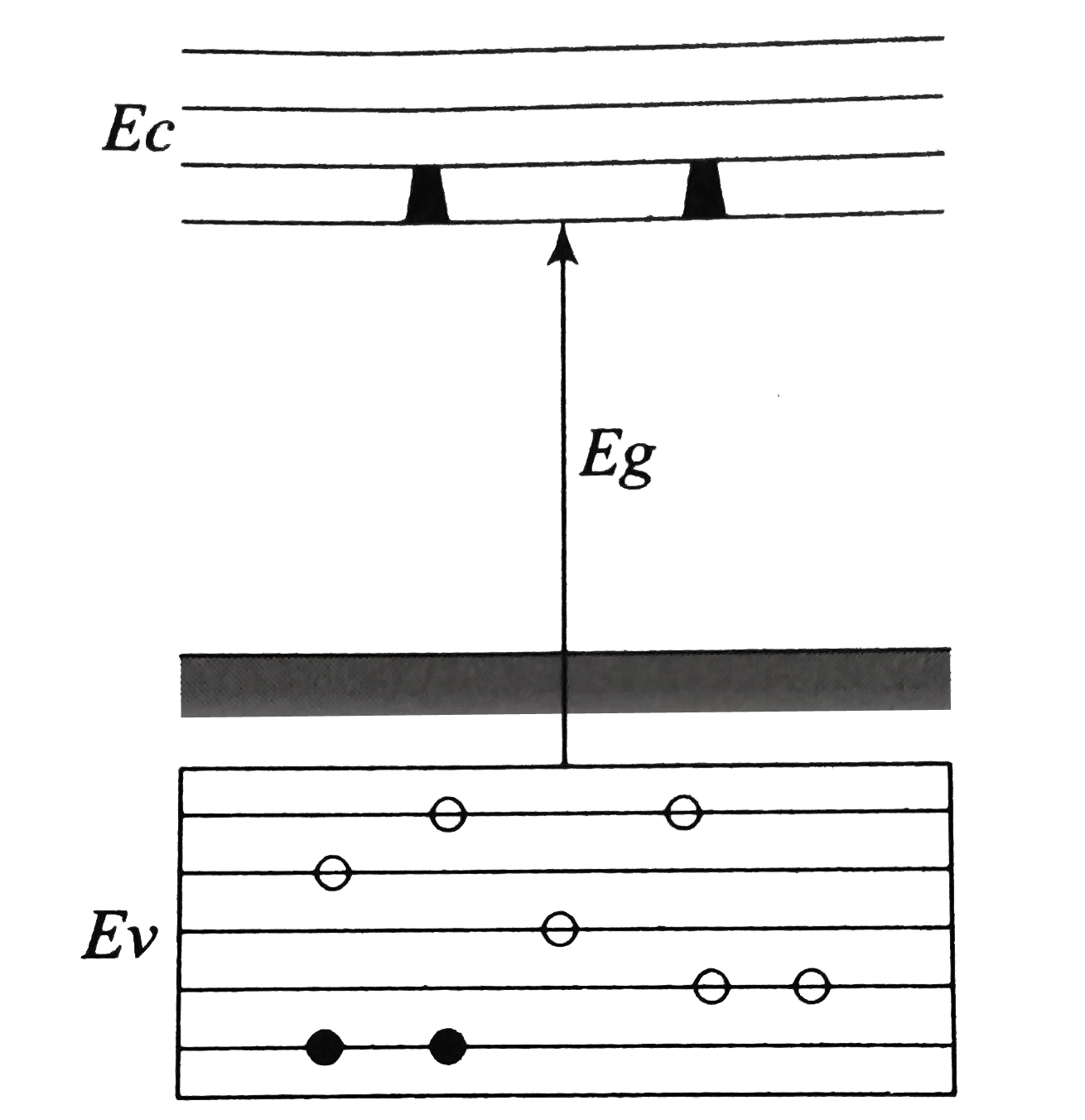| 1. | decreases for conductors but increases for semiconductors |
| 2. | increases for both conductors and semiconductors |
| 3. | decreases for both conductors and semiconductors |
| 4. | increases for conductors but decreases for semiconductors |
The solids which have the negative temperature coefficient of resistance are:
| 1. | insulators only |
| 2. | semiconductors only |
| 3. | insulators and semiconductors |
| 4. | metals |
\({C}\) and \({Si}\) both have the same lattice structure, having \(4\) bonding electrons in each. However, \(C\) is an insulator whereas \(Si\) is an intrinsic semiconductor. This is because:
| 1. | in the case of \(C\), the valence band is not completely filled at absolute zero temperature. |
| 2. | in the case of \(C\), the conduction band is partly filled even at absolute zero temperature. |
| 3. | the four bonding electrons in the case of \(C\) lie in the second orbit, whereas in the case of \(Si\), they lie in the third. |
| 4. | the four bonding electrons in the case of \(C\) lie in the third orbit, whereas for \(Si\), they lie in the fourth orbit. |
A p-n photodiode is made of a material with a bandgap of 2.0 eV. The minimum frequency of the radiation that can be absorbed by the material is nearly:
1.
2.
3.
4.
In the energy band diagram of a material shown below, the open circles and filled circles denote holes and electrons respectively. The material is a/an:

1. p-type semiconductor
2. insulator
3. metal
4. n-type semiconductor
Identify the incorrect statement from the following:
| 1. | The resistivity of a semiconductor increases with an increase in temperature. |
| 2. | Substances with an energy gap of the order of 10 eV are insulators. |
| 3. | In conductors, the valence and conduction bands may overlap. |
| 4. | The conductivity of a semiconductor increases with an increase in temperature. |
Carbon, Silicon, and Germanium atoms have four valence electrons each. Their valence and conduction bands are separated by energy band gaps represented by , and respectively. Which one of the following relationships is true in their case?
1.
2.
3.
4.
In semiconductors at room temperature:
| 1. | The valence band is completely filled and the conduction band is partially filled. |
| 2. | The valence band is completely filled. |
| 3. | The conduction band is completely empty. |
| 4. | The valence band is partially empty and the conduction band is partially filled. |


